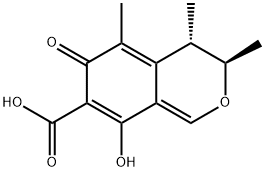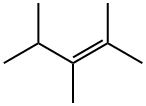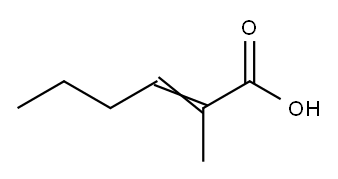Citrinin , 98% , 518-75-2
Synonym(s):
CIT;Citron protein;CTRO;Rho-interacting;(3R,4S)-8-Hydroxy-3,4,5-Trimethyl-6-Oxo-4,6-Dihydro-3H-Isochromene-7-Carboxylic Acid
CAS NO.:518-75-2
Empirical Formula: C13H14O5
Molecular Weight: 250.25
MDL number: MFCD00006912
EINECS: 208-257-2
| Pack Size | Price | Stock | Quantity |
| 5MG | RMB1598.40 | In Stock |
|
| others | Enquire |
PRODUCT Properties
| Melting point: | 175°C (dec.) |
| alpha | D18 -37.4° (c = 1.15 in alc.) |
| Boiling point: | 313.38°C (rough estimate) |
| Density | 1.37 |
| refractive index | 1.4560 (estimate) |
| Flash point: | 2℃ |
| storage temp. | 2-8°C |
| solubility | ≤2mg/ml in ethanol;20mg/ml in DMSO;20mg/ml in dimethyl formamide |
| form | Crystalline Powder or Flakes |
| pka | 1.52±0.60(Predicted) |
| color | Yellow |
| biological source | rabbit |
| Merck | 13,2351 |
| BRN | 5282243 |
| Stability: | Hygroscopic |
| CAS DataBase Reference | 518-75-2(CAS DataBase Reference) |
| IARC | 3 (Vol. 40, Sup 7) 1987 |
| EPA Substance Registry System | Citrinin (518-75-2) |
Description and Uses
Citrinin is a mycotoxin that has been found in Monascus and has diverse biological activities. It is active against S. aureus, methicillin-resistant S. aureus (MRSA), rifampicin-resistant S. aureus, and vancomycin-resistant E. faecium (MICs = 1.95, 3.9, 0.97, and 7.81 μg/ml, respectively), as well as the pathogenic yeast C. neoformans (MIC = 3.9 μg/ml). It is cytotoxic to a variety of cells in vitro, including bovine kidney cells and mice embryonic stem cells. Citrinin (30 μM) induces reactive oxygen species (ROS) production, mitochondrial membrane potential loss, and apoptosis in HepG2 cells, effects that can be blocked by the antioxidant resveratrol. In contrast, citrinin reduces glutamate-induced excitotoxicity in primary rat cortical neurons at concentrations ranging from 0.1 to 1,000 nM and inhibits LPS-induced production of nitric oxide (NO) in RAW 264.7 cells at 0.625 to 40 μM. It is toxic to brine shrimp larvae (LD50 = 96 μg/ml), as well as to rats and mice with oral LD50 values of 50 and 87-105 mg/kg, respectively. It induces reproductive abnormalities in male mice and toxic effects in the liver, kidney, heart, and gastrointestinal tracts of various animals. Citrinin has been found in stored cereal grains, as well as beans, fruit, and herbs.
antibacterial
Safety
| Symbol(GHS) |   GHS06,GHS08 |
| Signal word | Danger |
| Hazard statements | H301+H311+H331-H351 |
| Precautionary statements | P202-P261-P280-P301+P310-P302+P352+P312-P304+P340+P311 |
| Hazard Codes | T |
| Risk Statements | 23/24/25-40-36/37/38 |
| Safety Statements | 26-36/37/39-45-22-7/9 |
| RIDADR | UN 3462 6.1/PG 3 |
| WGK Germany | 3 |
| RTECS | DJ2275000 |
| HazardClass | 6.1(a) |
| PackingGroup | II |
| HS Code | 29419090 |
| Hazardous Substances Data | 518-75-2(Hazardous Substances Data) |
| Toxicity | LD50 in mice, rats (mg/kg): 35, 67 i.p. (Ambrose, De Eds) |





